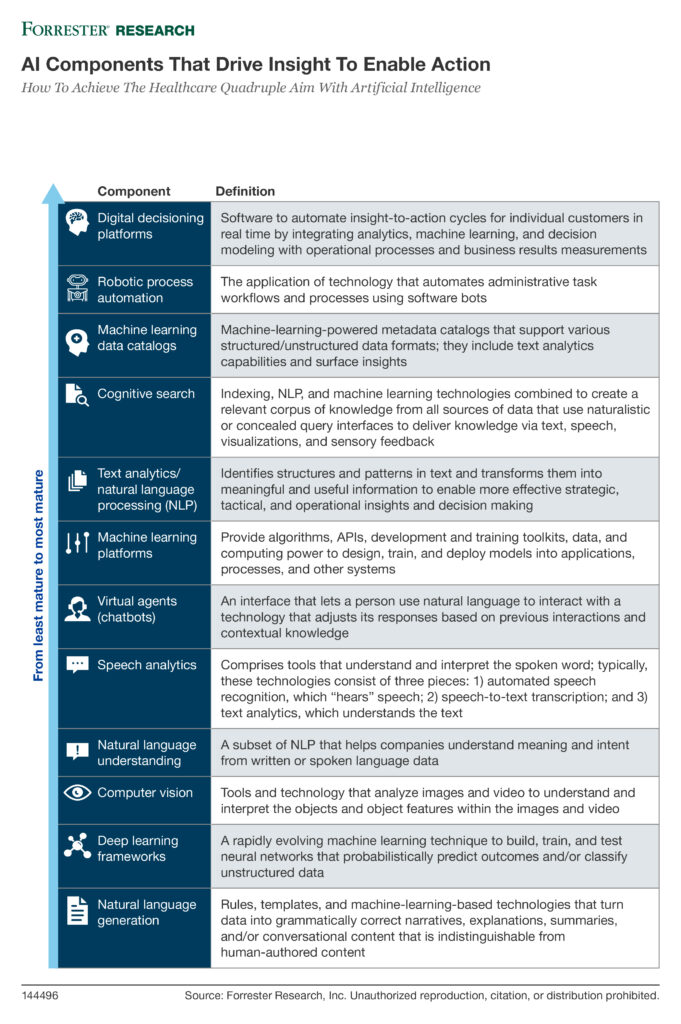Use-Case Selection Will Make Or Break Your AI Strategy In Healthcare
The use of AI in healthcare has moved beyond just science fiction to actual practical applications of the technology in various pockets of the healthcare ecosystem. In fact, in just the last year, nearly one half of healthcare organizations (HCOs) reported that they were implementing or expanding their plans to use artificial intelligence. Over the last several months, the Forrester healthcare team mapped AI leverage across different facets of the healthcare ecosystem and outlined the lessons learned from these success stories in our latest report, “How To Achieve The Healthcare Quadruple Aim With Artificial Intelligence.”
AI is referred to widely within healthcare, but AI is made up of many components. AI encompasses technologies that enable machines to sense, think, act, and learn at scale. These components have achieved varying stages of maturity in healthcare and support an even wider variety of use cases. The image below breaks through the AI jargon, defining each of these components and ranking their level of maturity.

These components are sometimes used on their own or often in collaboration with one another. For example, a common use case for health plans is to automate administrative requests from members, such as an address change. At its basic stage, this use case can be supported by a chatbot, which might leverage natural language understanding and processing to execute this task. As the chatbot matures and use cases evolve, the health plan may leverage text analytics to support sentiment analysis or proactively reach out to members using the chatbot to drive behavior change and enroll them in specific wellness programs.
To encourage and support future successful implementations across the healthcare industry, we have outlined seven directives that HCOs must follow. These directives will help guide HCOs to identify the innovations that will drive immediate value for their populations’ needs, convince laggards within their organizations, and enable HCOs to leverage AI for competitive differentiation. These directives include:
- Identifying the right use cases and choosing items that align to the quadruple aim.
- Finding partners across the ecosystem.
- Practicing proper data hygiene practices.
Implementing AI is a journey. Early success starts with the right use case selection and will set the stage for driving adoption and enable expansion that allows your organization to scale and extract incremental value from this investment.
Check out the report to learn more about recent success stories, see sample use cases for today and tomorrow, and learn how AI will shape the future of healthcare. To further discuss how your organization can achieve the quadruple aim with AI, schedule inquiry with myself, Jeff Becker, or Kjell Carlsson.
